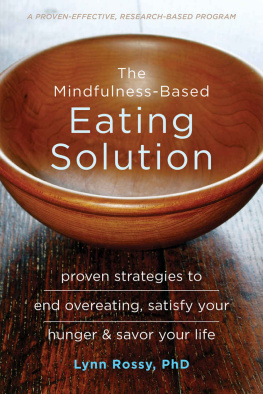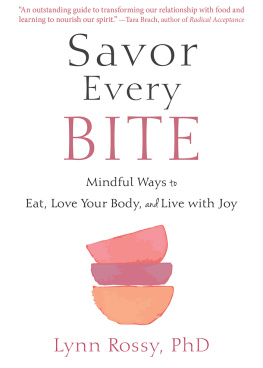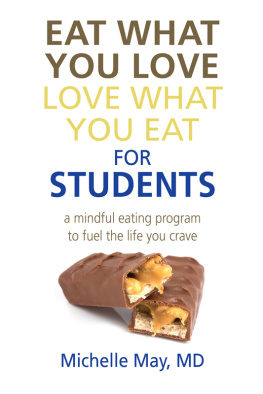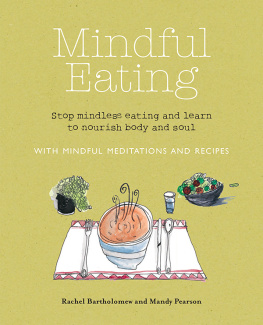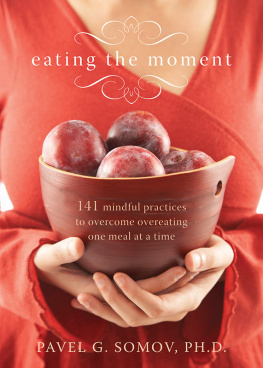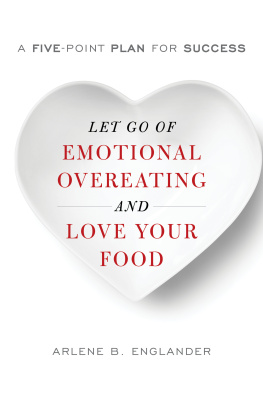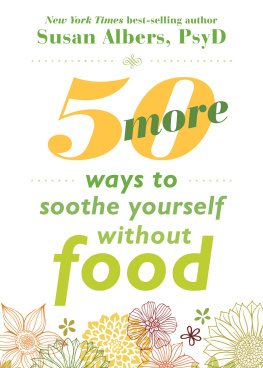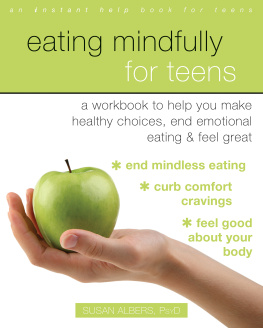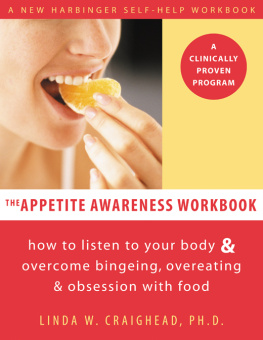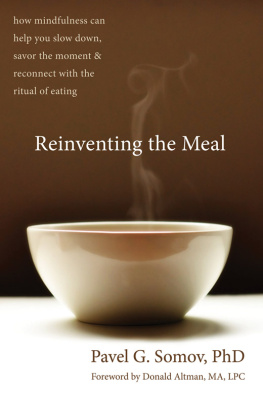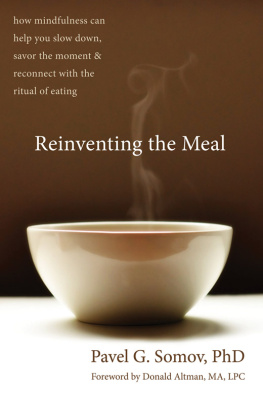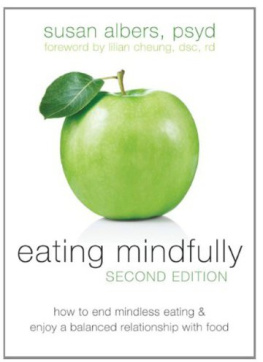A straightforward and commonsensical glide path into fine-tuning one of the most fundamental relationships in our lives, namely with food, for the sake of well-being, health, happiness, and social connection. This book will nourish and support you in multiple ways and, if you stick with its recommendations for practicing mindfulness, will give you more than a taste of who is eating in the first place, and why.
Jon Kabat-Zinn, author of Mindfulness for Beginners
Lynn Rossy takes us on a most uplifting and exquisite journey. She shows us how by bringing more consciousness to our eating, we can truly nourish ourselves and experience genuine well-being. She shows us how to have a healthy relationship with our bodies and minds, understand our habits while not being run by them, learn to listen to the wisdom right inside of us, and discover how to truly savor life. Clear, practical, and engaging, The Mindfulness-Based Eating Solution makes the process of taking good care of ourselves inspiring and fun. A wonderful book!
James Baraz, coauthor of Awakening Joy, and cofounding teacher at Spirit Rock Meditation Center in Woodacre, CA
The Mindfulness-Based Eating Solution gives anyone who has struggled with food a realistic and achievable approach to finding peace with food and eating. While founded on solid science, Lynn Rossy offers a supportive, nurturing, and real-life approach to inviting change while still enjoying the foods you love. The Mindfulness-Based Eating Solution will have you savoring each bite, appreciating your body, and leaving each meal feeling satisfied. Why beat up on yourself and continue to eat on autopilot? This excellent book gives you a clear road map for getting off the diet merry-go-round and building a healthy relationship to food!
Donald Altman, MA, LPC, author of The Mindfulness Toolbox, Clearing Emotional Clutter, and 12-Weeks to Mindful Eating
Reading this book is like talking to a wise and warmhearted frienda friend who has the knowledge and experience to help you reclaim the natural pleasure and daily satisfaction that is inherent in eating. As an added bonus, its filled with helpful exercises and tips based on scientific studies, including the authors own research.
Jan Chozen Bays, MD, author of Mindful Eating

Publishers Note
This publication is designed to provide accurate and authoritative information in regard to the subject matter covered. It is sold with the understanding that the publisher is not engaged in rendering psychological, financial, legal, or other professional services. If expert assistance or counseling is needed, the services of a competent professional should be sought.
Distributed in Canada by Raincoast Books
Copyright 2016 by Lynn Rossy
New Harbinger Publications, Inc.
5674 Shattuck Avenue
Oakland, CA 94609
www.newharbinger.com
Cover design by Amy Shoup
Acquired by Jess OBrien
Edited by Rona Bernstein
All Rights Reserved
Library of Congress Cataloging-in-Publication Data on file
To Ginny Morgan, who introduced me to the practice of mindfulness. Her gentle, wise spirit has surely helped me write this book, even from the heavenly realms.
Contents
I f you have ever struggled with how to eat or felt dissatisfied with your body, this book is for you. These two interrelated issues can cause tremendous emotional distress, guilt, shame, depression, and anxiety. Instead of inspiring healthy behavior, efforts to change often result in unhealthy weight-control strategies, binge eating, reduced physical activity, and poorer overall health.
No matter how old you are, what you look like, or what number appears on the scale, the battle with food and the destructive criticism of our bodies is epidemic in size and scale. This phenomenon holds true for women and men, although women are known to report it more often. Almost everybody would like to have a better relationship with food and their bodies.
The culture we live in and the environments we work in compound our troubles. The conditions of the modern workplaceoffices filled with unhealthy food choices and jobs that often require sitting for hours in front of a computermake it extremely difficult to nourish our bodies with the right food and regular movement. Whether we work in an office or not, our culture compels us to be busy, overworked, overscheduled, and distractedconditions which do not support making good choices for our physical, mental, and emotional well-being. Combine these circumstances with the constant barrage of conflicting information and advertisements telling us the perfect way to eat and look, and you have a recipe for discontent and dysfunction.
Although the difficulties people face as they seek a better relationship with food and their bodies are extremely complex and varied, there is an underlying thread that ties them together. That thread is the very natural longing of body, mind, and heart for greater health and well-being. That longing brought you to this book.
As a health psychologist at a university wellness program, I was given the task of developing a program to help people overcome their issues with weight. Being a heterogeneous community, we needed something that would appeal to people who fall along the continuum of underweight to overweight. I brought my own past experiences with binge eating and being overweight, my personal and professional practice of mindfulness, and my true love of food to the task. What developed was a holistic approach to weight management that included a broad view of health. When you start to become healthy with regard to food, you simultaneously become a healthier person in all aspects of your life.
Witnessing the restoration to a healthy mind and body experienced by people when they use the concepts and ideas found in this book has been a great honor and joy. In fact, it has become my greatest passion. I hope you join these people in taking the same steps to restore your relationship to food and your body.
It can be helpful to have a notebook or journal to record your thoughts, feelings, and experiences as you read through the book. Writing can help you explore new information, reveal insights, and clarify your wisdom. It can provide a record of your understanding and growth about this new way of eating and living.
Throughout the book, I share the stories of people whose lives have been changed through the practices you find in each chapter. The stories are authentic, although the names of people have been changed to preserve privacy and confidentiality. On occasion, composite characters are used in order to condense common themes. You arent alone and these stories prove it.
Writing this book has been an extremely satisfying labor of love. I have tried to flavor it with the excitement and enthusiasm I feel at the prospect of helping others through the words on these pages. It is my sincere wish that this book be a guide for you to having a life thats filled with the joys of eating, moving your body in ways that feel delicious, mastering the skills to overcome difficulties without using food, and embracing the fullness of the life you were meant to live.
You Can Have Your Cake and Eat It Too!
H ow did eating get so complicated? There is an increasing amount of diet advice and plans available, and yet the prominent result has been to overwhelm and confuse people about how to nurture themselves. Our struggles with food have simultaneously created a war with our bodies. By using the practices in this book, you will be able to restore harmony with food and reunite with your body.
Next page
